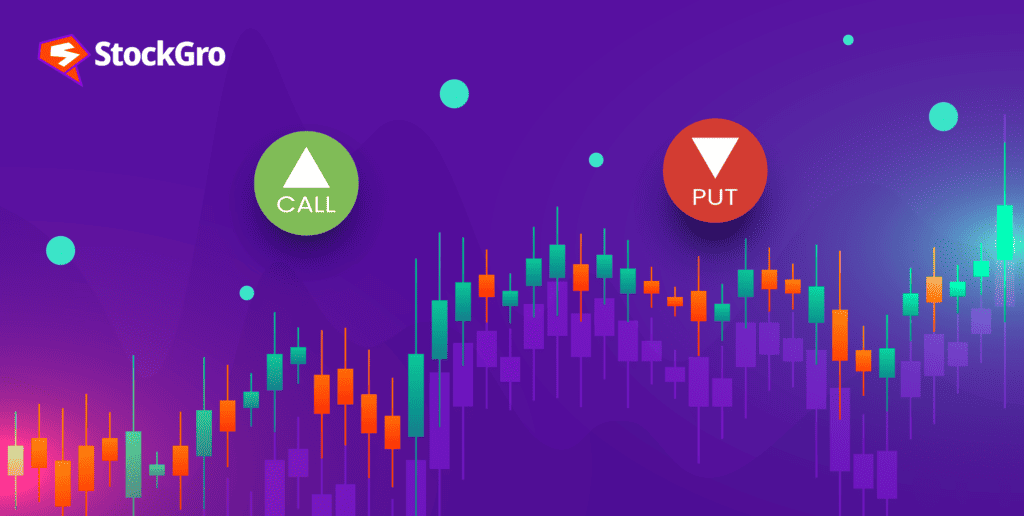
Investing can be both thrilling and challenging, especially when exploring advanced financial instruments like options and derivatives. Understanding these tools doesn’t have to be overwhelming; in fact, it can be easy.
Derivatives derive their value from underlying assets, allowing you to speculate or hedge against price movements. Options are a type of derivative. Options provide the right (but not the obligation) to buy or sell underlying assets at a predetermined price, offering flexibility in volatile markets.
Understanding how to use options and derivatives allows you to manage risk, enhance portfolio performance, and capitalize on market opportunities.
This article explores the basics of these tools, providing a beginner-friendly guide for using options and derivatives in investment.
What are options?
Options are financial derivatives that give the holder the right, but not the obligation, to buy or sell an underlying asset at a predetermined price within a specified time period. Stocks, bonds, commodities, currencies, or indexes can all be considered the underlying asset.
Options are basically of two types: call and put options.
- Call options: A call option gives the holder (buyer) the right to buy an underlying asset at a specified price, known as the strike price, before or at the expiration date.
- Put options: A put option gives the holder (buyer) the right to sell an underlying asset at a specified price (strike price) before or at the expiration date.
Trading options in financial markets entails purchasing and selling these contracts. Options are used by traders for speculating, hedging, and generating money, among other things.
The value of an option is influenced by factors such as the underlying asset’s price, time until expiration, volatility, and interest rates.
Also Read: The role of stock weightage in stock market indices
What are derivatives?
A derivative is a financial contract whose value is derived from the performance of an underlying asset, index, rate, or other reference. The underlying asset can be stocks, bonds, commodities, currencies, interest rates, market indices, or other financial variables.
Derivatives are essentially contracts between two parties that specify conditions under which payments are made between them based on the value of the underlying asset or index.
There are several types of derivatives, including
- Forward contracts: These are agreements between two parties to buy or sell an underlying asset at a specified future date for a price agreed upon today.
- Futures contracts: Similar to forward contracts, futures contracts involve an agreement to buy or sell an underlying asset at a future date, but they are standardized and traded on organized exchanges.
- Options: Options provide the buyer the right, but not the obligation, to buy (call option) or sell (put option) an underlying asset at a predetermined price within a specified period.
- Swaps: Contracts in which two parties agree to exchange cash flows or other financial instruments over a specified time period. Some common types of swaps include interest rate swaps and currency swaps.
Derivatives are used for various purposes, such as hedging against price fluctuations, leveraging future market movements, and managing risk in financial markets.
Risks and rewards of options and derivatives trading
Options trading can offer both opportunities and risks for you as a trader. Here are some key considerations regarding the risks and rewards of options trading:
Rewards of options trading and derivatives
Options trading and derivatives offer several potential rewards and benefits to you:
- Leveraged profits: The use of leverage can magnify profits, allowing you to earn significant returns with a smaller upfront investment potentially.
- Hedging opportunities: Derivatives provide a way to hedge against price movements, allowing you to protect your portfolios from adverse market conditions.
- Flexibility: Options offer a range of strategies, providing you with flexibility to profit in various market conditions, including bullish, bearish, and neutral scenarios.
- Diversification: Derivatives enable exposure to different underlying asset classes and markets, allowing for a more diversified investment portfolio.
- Speculative gains: Traders can profit from price movements without owning the underlying asset, providing opportunities for speculation and capitalizing on market trends.
Risks of options trading and derivatives
Options trading and derivatives have a number of risks, including:
- Leverage risk: While leverage can magnify profits, it also amplifies losses. If the market moves against the investor, they could incur significant losses, possibly exceeding their initial investment.
- Time decay: Options have expiration dates, and their value tends to decrease over time. If the market doesn’t move in the anticipated direction quickly enough, the option may lose value, leading to losses.
- Complexity: Derivatives can be complex financial instruments, and understanding their mechanics requires a certain level of financial knowledge. Novice investors may find it challenging to navigate the intricacies of options and derivatives.
- Market risk: All investments carry market risk, and options and derivatives are no exception. Market conditions can change rapidly, leading to unexpected price movements that may result in losses.
Also Read: What is options trading and how does it work?
Strategies for using options and derivatives for investors
Options and derivatives strategies are categorized into three types: hedging strategies, speculative strategies, and income-generating strategies. By learning these derivatives and options trading strategies, you can manage risks and increase returns.
Here is a brief overview of each:
1. Hedging strategies
To safeguard your investments, consider using hedging strategies for derivatives, particularly hedging with options. Protect against potential losses by using options to offset adverse price movements in your portfolio.
For instance, you can buy put options on a stock you already own and can protect against a decline in stock value. Additionally, you can manage overall risk by diversifying your exposure through strategic combinations of long and short positions.
Hedging strategies with derivatives provide a valuable toolset, helping you navigate the unpredictable nature of financial markets while minimizing potential downsides.
2. Speculative strategies
Speculative strategies involve taking risks in the financial market to gain from price changes potentially. You can use options and derivatives via leverage, to increase returns by placing trades in the direction of market trend.
For instance, you can buy call options in a growing market or put options in a declining market. Leveraging derivatives for investment means using these financial tools to make bigger trades, but it comes with increased risk.
Always be mindful of the market direction and the associated risks when using speculative strategies with leveraging derivatives market strategies in your investment approach.
Also read: How to achieve financial freedom and live your best life?/
3. Income-generating strategies
In Income-Generating Strategies, like Covered Calls and Selling Put Options, you create income while minimizing risk using derivatives. This is a useful strategy for undertaking investment with derivatives.
With Covered Calls, you already own a stock and earn premiums by selling call options of that underlying stock. If the stock price stays below the agreed-upon level, you keep the premium. Selling Put Options involves committing to buy a stock at a set price, earning premiums. You should also check options pricing models to make an informed decision.
Both methods contribute to your income, and the risk mitigation using derivatives helps safeguard against potential losses. These options trading techniques let you navigate the market, generate earnings, and strategically manage risks in your investment portfolio.
Conclusion
In your investment journey, understanding options and derivatives is crucial. They offer diverse strategies like hedging against price swings and earning profit. Remember, risk management in derivatives is key to safeguarding your investments. Options and futures trading provide opportunities, but they come with risks. To simplify your experience, explore StockGro.

